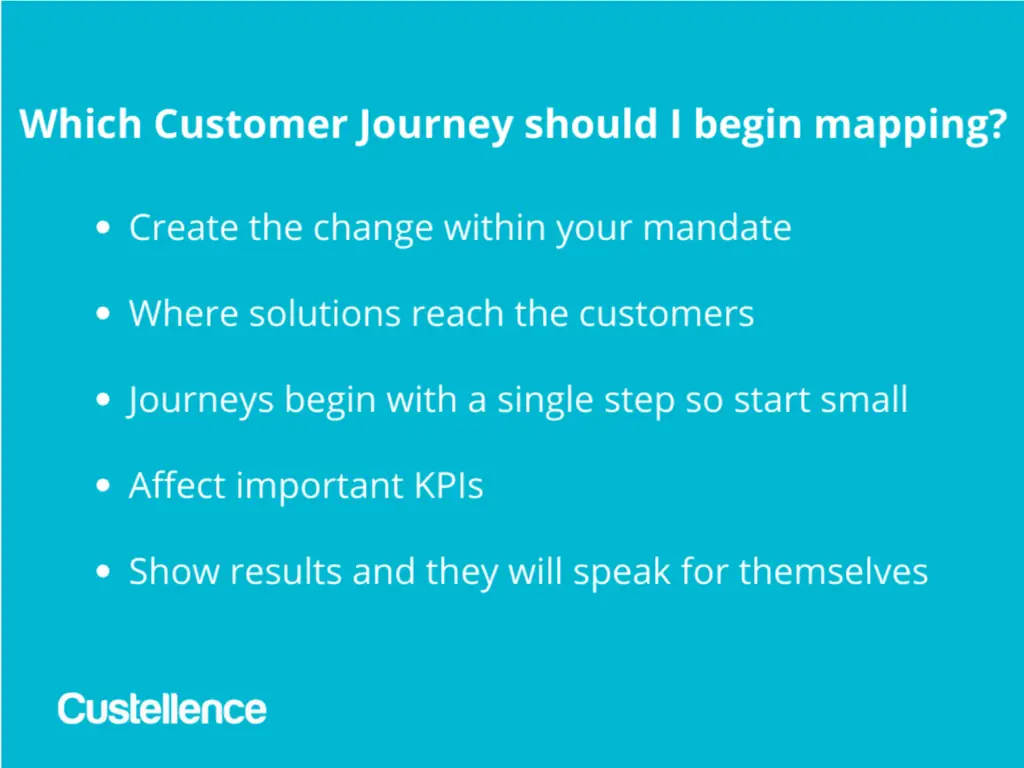With so many journeys waiting to be mapped, it can be tough to know which customer journey is the most important one for you to start mapping. Here are our top 5 tips to keep in mind to help you pick a customer journey.
Create the change within your mandate
When it comes to customer-centricity, the notion of the “most important” journey is a perspective trap. It’s not about mapping the “most important” journeys but rather focusing on where you and the committed people internally have the most impact. Focus on the areas in a customer journey, where you have the mandate to make decisions, get funding, or have the ability to influence leaders and important stakeholders. Wherever you can influence decisions and activities that come from your journey mapping, you have the chance to create a great case.
Where solutions reach customers
Look for the journey with the highest chance of implementing your changes and where the solution also reaches the customer (e.g., improves the customer experience). Finding these low-hanging customer journeys will help guarantee that your journey maps will create implementable change that will affect your customer-centric KPIs.
Journeys begin with a single step so start small
It is often tempting to start with an end-to-end journey or within a business area with a potentially massive impact. But be mindful, particularly at the start of journey mapping, where there is so much capability to improve, it can be easy to complicate things. It can easily overwhelm when starting with too large a scope, becoming too complex, leading to many other potential problems, and ending in nothing. So it’s always best practice to start small, show results, and then scale it up.
Affects important KPIs
A crucial principle when creating journey maps is to connect them to the purpose of the organization and the relatable customer-centric KPIs. The best way to make your case is to show tangible results where you can impact the customer experience that affects performance metrics. This will help you get the trust and confidence to continue your customer experience initiative.
Show the results and they will speak for themselves
This tip has less to do with which customer journey you begin with and more with what to do with the map that you’ve started. The most important thing you can do is to show the results and progress you have made, even if it’s on a small scale. Especially if you have metrics or any KPIs to support your case. Showing the changes and tangible results that you have accomplished will save you time and effort in convincing others of the benefits of journey mapping.

Discover how to create great Journey Maps by following our step-by-step guide.
By Daniel Ewerman


